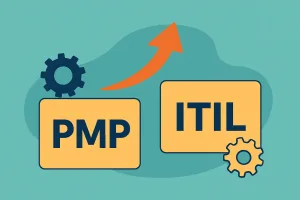Introduction
Scrum has emerged as a pivotal framework within the Agile methodology, enabling teams to deliver high-quality products efficiently. Scrum emphasizes iterative progress, collaboration, and adaptability, making it particularly effective in environments where requirements frequently change. By breaking projects into manageable sprints, Scrum allows teams to focus on delivering incremental value, thereby enhancing overall productivity and responsiveness to market demands.
Investing in quality Scrum software is not merely a tactical decision; it is a strategic imperative that can significantly influence an organization’s return on investment (ROI). ROI, in this context, refers to the financial gains and operational efficiencies realized from deploying effective Scrum tools. These tools facilitate real-time collaboration, streamline sprint planning, and enhance transparency across teams, ultimately leading to improved project outcomes and customer satisfaction.
The objective of this blog post is to delve into the financial and operational benefits of quality Scrum software. By analyzing how these tools can optimize resource allocation, reduce time-to-market, and improve team dynamics, we aim to provide C-level executives and financial analysts with a compelling business case for investing in Scrum solutions. Understanding the impact of these investments on ROI will empower decision-makers to make informed choices that align with their organizational goals and drive sustainable growth.
Understanding the Financial Impact of Quality Scrum Software
Investing in quality Scrum software can yield significant financial benefits for organizations, particularly in terms of cost savings, improved efficiency, and enhanced collaboration. Here are the key points to consider:
- Cost Savings through Improved Team Efficiency and Productivity: Quality Scrum tools streamline workflows and automate repetitive tasks, which leads to increased efficiency and productivity among team members. By reducing manual errors and freeing up time for more strategic activities, organizations can achieve higher output levels without a corresponding increase in costs. This efficiency translates directly into cost savings, as teams can deliver more in less time, ultimately enhancing the return on investment (ROI) for the software purchased [1][8].
- Reduction in Project Overruns and Increased Predictability of Timelines: One of the most significant advantages of using Scrum software is its ability to improve project predictability. By facilitating better planning and tracking of project progress, these tools help teams adhere to timelines more effectively. This reduction in project overruns not only saves money but also enhances stakeholder confidence in project delivery. When projects are completed on time and within budget, organizations can allocate resources more effectively and avoid the financial pitfalls associated with delays and overruns [3][5].
- Quantifying the Financial Impact of Enhanced Collaboration and Communication: Quality Scrum software fosters improved collaboration and communication among team members and stakeholders. Enhanced collaboration leads to better decision-making and risk management, which can significantly impact project outcomes. The financial implications of this improved communication can be substantial, as it reduces misunderstandings and misalignments that often lead to costly rework. By quantifying the benefits of enhanced collaboration, organizations can better understand the financial value of investing in Scrum tools, as these tools contribute to a more cohesive and effective project environment [6][9].
Operational Benefits of Implementing Scrum Software
Investing in quality Scrum software can significantly enhance operational capabilities within an organization, leading to improved efficiency and productivity. Here are some key operational benefits that C-Level executives and financial analysts should consider:
- Streamlining Workflows and Improving Task Management: Scrum software is designed to facilitate iterative and incremental development, which allows teams to break down projects into manageable tasks. This division into smaller increments, known as sprints, enables teams to focus on specific objectives, reducing bottlenecks and enhancing overall workflow efficiency. By automating routine tasks and providing a clear structure for task management, Scrum tools help teams prioritize work effectively, ensuring that critical tasks are completed on time and resources are utilized optimally.
- Enhanced Visibility and Tracking of Project Progress: One of the standout features of quality Scrum software is its ability to provide real-time visibility into project progress. Dashboards and reporting tools allow stakeholders to monitor key performance indicators (KPIs) and track the status of tasks and sprints. This transparency fosters accountability among team members and enables executives to make informed decisions based on up-to-date information. Enhanced visibility also aids in identifying potential issues early, allowing for timely interventions that can prevent project delays and cost overruns.
- Facilitating Better Resource Allocation and Management: Effective resource management is crucial for maximizing ROI. Scrum software provides insights into team capacity and workload, enabling leaders to allocate resources more effectively. By understanding team dynamics and individual workloads, organizations can ensure that resources are assigned to the right tasks at the right time. This strategic allocation not only optimizes productivity but also minimizes the risk of burnout among team members, leading to a more sustainable work environment.
Evaluating Key Features of Scrum Software that Drive Value
Investing in quality Scrum software can significantly enhance both financial and operational performance for organizations. For C-Level executives and financial analysts, understanding the key features that contribute to maximizing ROI is essential. Here are the critical features to consider:
- Integrated Tools for Backlog Management, Sprint Planning, and Reporting: Effective Scrum software should provide a comprehensive suite of integrated tools that streamline backlog management, facilitate sprint planning, and generate insightful reports. This integration allows teams to maintain a single source of truth, reducing the time spent on administrative tasks and increasing focus on delivering value. By enabling real-time collaboration and visibility into project status, these tools help teams respond quickly to changes, ultimately leading to faster delivery of products and services, which can enhance revenue generation and customer satisfaction [5][8].
- Customization and Scalability to Fit Organizational Needs: The ability to customize Scrum software to align with specific organizational processes and workflows is crucial. As businesses grow and evolve, their project management needs may change. Quality Scrum tools offer scalability, allowing organizations to adapt the software to their changing requirements without significant additional investment. This flexibility ensures that teams can continue to operate efficiently, maximizing productivity and minimizing disruptions, which directly contributes to a higher return on investment [6][7].
- User-Friendly Interfaces that Encourage Team Adoption: A user-friendly interface is vital for ensuring that team members can easily navigate the software and utilize its features effectively. When Scrum tools are intuitive and accessible, team adoption rates increase, leading to better collaboration and communication among team members. High adoption rates can reduce training costs and accelerate the time to value, as teams can quickly become proficient in using the software. This ease of use not only enhances productivity but also fosters a culture of continuous improvement, which is essential for maximizing ROI [14][15].
Case Studies: Companies Achieving ROI with Quality Scrum Tools
Investing in quality Scrum software can significantly enhance project management efficiency and drive substantial returns on investment (ROI). Below are real-world examples of organizations that have successfully leveraged Scrum tools to improve their project outcomes, along with quantifiable results and insights from C-Level executives.
1. Spotify: Scaling Agile with Groups
Spotify is renowned for its innovative approach to Agile methodologies, particularly through its use of Scrum software. By implementing a unique structure of “groups” and “squads,” Spotify has been able to enhance collaboration and speed up product development cycles. This approach has led to:
- Improved Delivery Times: Spotify reported a 40% reduction in time-to-market for new features, allowing them to respond swiftly to customer needs.
- Cost Savings: The streamlined processes enabled by Scrum tools have resulted in significant operational cost reductions, estimated at 20% annually.
C-Level executives at Spotify have noted that the investment in Scrum software has been pivotal in maintaining their competitive edge in the fast-paced music streaming industry, emphasizing the importance of agility in their business model [1][6].
2. Boa Vista: Financial Success with Agile
Boa Vista, Brazil’s credit bureau, underwent a successful Agile transformation by adopting Scrum principles. The organization faced challenges with lengthy product release cycles and bureaucratic hurdles. By integrating Scrum software, Boa Vista achieved:
- Faster Product Releases: The transition from Waterfall to Agile methodologies reduced product release times by 50%, allowing for quicker adaptation to market demands.
- Enhanced Efficiency: The use of project management tools facilitated better resource allocation, leading to a 30% increase in team productivity.
Executives at Boa Vista have praised the Scrum software for its role in overcoming operational inefficiencies, stating that the investment has not only improved project delivery but also enhanced overall business agility [8][9].
3. Sto: Optimizing eCommerce Sales Strategy
Sto, a company focused on eCommerce, hired a Scrum team to optimize its sales strategy. The implementation of Scrum software resulted in:
- Increased Sales: The company experienced a 25% increase in online sales within the first quarter post-implementation.
- Cost Efficiency: By streamlining project management processes, Sto reduced project costs by 15%, allowing for reinvestment into further growth initiatives.
C-Level executives at Sto have highlighted the transformative impact of Scrum tools on their operational strategy, noting that the investment has directly contributed to their bottom line [11][5].
4. Mayden: Transformation from Waterfall to Scrum
Mayden, a software development company, transitioned from traditional Waterfall methodologies to Scrum, resulting in:
- Higher Team Empowerment: The adoption of Scrum software led to a 35% increase in team engagement and satisfaction, which in turn improved project outcomes.
- Reduced Time to Market: The company achieved a 30% faster delivery of software products, enhancing their ability to meet client demands promptly.
Mayden’s leadership has expressed that the investment in quality Scrum tools has been crucial for fostering a culture of collaboration and innovation, ultimately driving financial success [3][4].
Calculating ROI: Metrics and KPIs to Consider
When investing in quality Scrum software, it is essential for C-Level executives and financial analysts to understand how to measure the return on investment (ROI) effectively. This involves identifying relevant metrics and key performance indicators (KPIs) that can provide insights into the financial and operational benefits of these tools. Here’s a framework to guide your evaluation:
Relevant Metrics and KPIs
- Time Savings:
- Velocity: Measure the amount of work completed in a sprint. An increase in velocity indicates improved team efficiency and can lead to faster project delivery.
- Cycle Time: Track the time taken from the start of a task to its completion. Reducing cycle time can significantly enhance productivity and speed up time-to-market.
- Cost Efficiency:
- Cost Savings: Evaluate how the software reduces operational expenses, such as minimizing manual processes or avoiding costly errors. This can be quantified by comparing pre- and post-implementation costs.
- Return on Investment (ROI): Calculate ROI using the formula: ROI = (Net Income / Total Investment). This metric helps in assessing the profitability of the investment in Scrum software [1].
- Team Performance:
- Employee Productivity: Measure the output per team member. An increase in productivity can indicate that the Scrum software is facilitating better collaboration and efficiency [5].
- Quality of Deliverables: Track defect rates or customer satisfaction scores post-implementation. Improved quality can lead to higher customer retention and reduced rework costs.
Setting Benchmarks for Evaluating Success
To effectively evaluate the success of Scrum software post-implementation, it is crucial to establish clear benchmarks. These benchmarks should be based on historical data and industry standards. Consider the following steps:
- Define Baseline Metrics: Before implementation, gather data on current performance metrics, such as average cycle time, team velocity, and cost per project. This will serve as a reference point for future comparisons.
- Set Specific Goals: Establish clear, measurable goals for each KPI. For example, aim for a 20% reduction in cycle time or a 15% increase in team velocity within the first six months of using the software.
- Regular Review: Schedule periodic reviews (e.g., quarterly) to assess progress against these benchmarks. This will help in identifying areas for improvement and ensuring that the software is delivering the expected benefits [4].
Tools and Methods for Ongoing ROI Assessment
To maintain a continuous assessment of ROI, consider implementing the following tools and methods:
- KPI Dashboards: Utilize modern cloud-based software solutions that offer financial KPI dashboards. These tools can help track and visualize key metrics in real-time, making it easier to monitor performance and make data-driven decisions [6].
- Regular Surveys and Feedback: Conduct surveys among team members and stakeholders to gather qualitative data on the software’s impact on workflow and collaboration. This feedback can provide valuable insights into areas that may require further optimization.
- Benchmarking Against Industry Standards: Compare your team’s performance metrics with industry benchmarks to gauge how well your Scrum software is performing relative to competitors. This can help identify best practices and areas for improvement [8].
By focusing on these metrics, setting clear benchmarks, and utilizing effective tools for ongoing assessment, C-Level executives and financial analysts can make informed decisions about their investments in Scrum software, ultimately maximizing ROI and enhancing overall business performance.
Challenges in Scrum Software Adoption and How to Overcome Them
Transitioning to Scrum software can present several challenges for organizations, particularly for those new to Agile methodologies. Understanding these obstacles and implementing effective strategies can significantly enhance the likelihood of successful adoption and maximize the return on investment (ROI) in quality Scrum tools. Here are some common challenges and strategies to address them:
Common Challenges Faced by Organizations Transitioning to Scrum
- Resistance to Change: One of the most significant hurdles is the inherent resistance from team members and stakeholders who may be accustomed to traditional project management methods. This resistance can manifest in various forms, from passive reluctance to active opposition, making it crucial to address these concerns early in the transition process [8].
- Lack of Management Commitment: Successful Scrum adoption requires strong support from leadership. Without management buy-in, teams may struggle to implement Scrum practices effectively, leading to disillusionment and failure [9].
- Inadequate Training and Understanding: Many organizations face challenges due to a lack of understanding of Scrum principles and practices. Teams may not know how to work together within the Scrum framework, leading to confusion and inefficiencies [3].
- Coordination Across Teams: For larger organizations, scaling Scrum across multiple teams can lead to coordination challenges. Ensuring that all teams adhere to consistent Scrum practices is essential for maintaining alignment and integration [7].
- Information Silos: Transitioning to Agile can sometimes exacerbate existing information silos within organizations, hindering communication and collaboration among teams [10].
Strategies for Training, Onboarding, and Change Management
- Comprehensive Training Programs: Conducting workshops and training sessions can help team members understand the benefits of Scrum and how to implement it effectively. Gradually introducing Scrum practices can ease the transition and reduce resistance [5].
- Effective Onboarding Processes: Develop structured onboarding processes for new team members that emphasize Scrum principles and practices. This ensures that everyone is on the same page and understands their roles within the Scrum framework [3].
- Change Management Initiatives: Implementing change management strategies can help address resistance and facilitate a smoother transition. This includes communicating the benefits of Scrum, involving team members in the decision-making process, and providing ongoing support [9].
Importance of Leadership Support and Cultural Alignment
- Leadership Engagement: Strong support from C-level executives is critical for fostering a culture that embraces Agile methodologies. Leaders should actively promote Scrum practices and demonstrate their commitment to the process [11].
- Cultural Alignment: Aligning organizational culture with Agile principles is essential for successful Scrum adoption. This may involve shifting mindsets from traditional command-and-control structures to more collaborative and empowered team dynamics [14].
- Fostering a Culture of Trust: Encouraging open communication and trust among team members can help mitigate resistance and promote a positive environment for Scrum practices. The Scrum Master plays a pivotal role in guiding teams through this cultural shift [11].
By addressing these challenges and implementing effective strategies, organizations can enhance their Scrum software adoption process, leading to improved operational efficiency and a higher ROI on their investment in quality Scrum tools.
Conclusion: Strategic Investment in Scrum Software
The adoption of quality Scrum software is not merely a tactical decision but a strategic investment that can significantly enhance both financial performance and operational efficiency. Here are the key points that underscore the importance of prioritizing Scrum tools in your budget planning:
- Financial Benefits: Investing in quality Scrum software can lead to substantial cost savings by streamlining processes and reducing the time spent on non-deliverable items, such as excessive internal documentation. This efficiency translates into higher productivity and ultimately maximizes return on investment (ROI) for the organization [9].
- Operational Advantages: Quality Scrum tools facilitate improved collaboration between development teams and stakeholders, leading to a more agile response to market changes and customer needs. This close collaboration increases the likelihood of customer satisfaction, which is crucial for long-term business success [11]. Furthermore, Scrum software supports the effective management of sprints, allowing teams to focus on delivering value incrementally, thereby enhancing overall project outcomes [2][14].
- Strategic Prioritization: For C-Level executives and financial analysts, it is essential to recognize the strategic importance of Scrum software in budget planning. By prioritizing these tools, organizations can not only enhance their project management capabilities but also position themselves for competitive advantage in their respective markets. The right Scrum software can empower teams to excel in their software development pursuits, ultimately driving business growth [4].
Find out more about Shaun Stoltz https://www.shaunstoltz.com/about/.
This post was written by an AI and reviewed/edited by a human.



